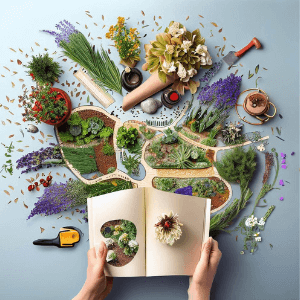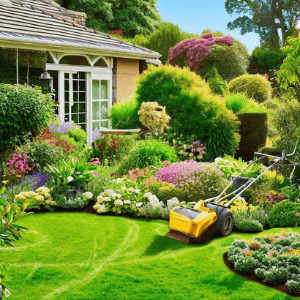Creating a garden can be a fantastic way to add beauty and value to your home, but maintaining one can be daunting. With busy schedules and the need to conserve water, many homeowners are looking for ways to create a garden that requires minimal maintenance.
That's where a low-maintenance garden comes in. Low-maintenance gardens are beautiful and functional, requiring little watering, fertilizing, and pruning.
This article will walk you through the steps of creating a low-maintenance garden, from planning to maintenance.
Planning
The first step in creating a low-maintenance garden is to assess the site. This includes analyzing the soil, determining sun and shade patterns, and designing the layout. When it comes to soil, it's essential to understand its composition and fertility.
A soil test can help determine pH, nutrient content, and drainage. Knowing the soil's characteristics will help you choose the right plants. Native plants and drought-tolerant plants are great options for low-maintenance gardens. They are adapted to the local climate and require less water and care.
Choosing the Right Plants
They must consider their water needs, growth habits, and bloom time when choosing the right plants. Drought-tolerant plants and native plants are excellent choices for low-maintenance gardens. They are adapted to the local climate and require less water and care.
Perennials are also great options because they come back year after year, eliminating the need to replant. Ground covers can replace grass for a green, mowing-free lawn. Mulch is a great addition to a garden because it keeps the soil moist, keeps weeds from growing, and keeps the soil cool.
Irrigation
Irrigation is an important aspect of any garden, and it's essential to understand the water needs of your plants. Drip irrigation is a low-maintenance and efficient way to water your plants. It delivers water directly to the roots and reduces evaporation.
Rainwater harvesting and greywater reuse are also great options for low-maintenance gardens. These methods allow you to capture and reuse water, reducing the need for irrigation.
Maintenance
Proper pruning techniques, weed control, pest management, and fertilizing are vital to maintaining a low-maintenance garden. Pruning keeps plants healthy and manages their size.
Mulching is an excellent way to control weeds and retain moisture in the soil. Organic pest control methods include companion planting and beneficial insects. Fertilizing should be done sparingly and only when necessary.
Conclusion
Creating a low-maintenance garden is a great way to enjoy the beauty of nature without the added stress of maintenance. By following these simple steps, you can create a beautiful, sustainable, and low-maintenance garden that will provide years of enjoyment.
Choose the right plants, use efficient irrigation, and maintain your garden to keep it healthy and beautiful. If you need more help, there are many online and local gardening resources.



